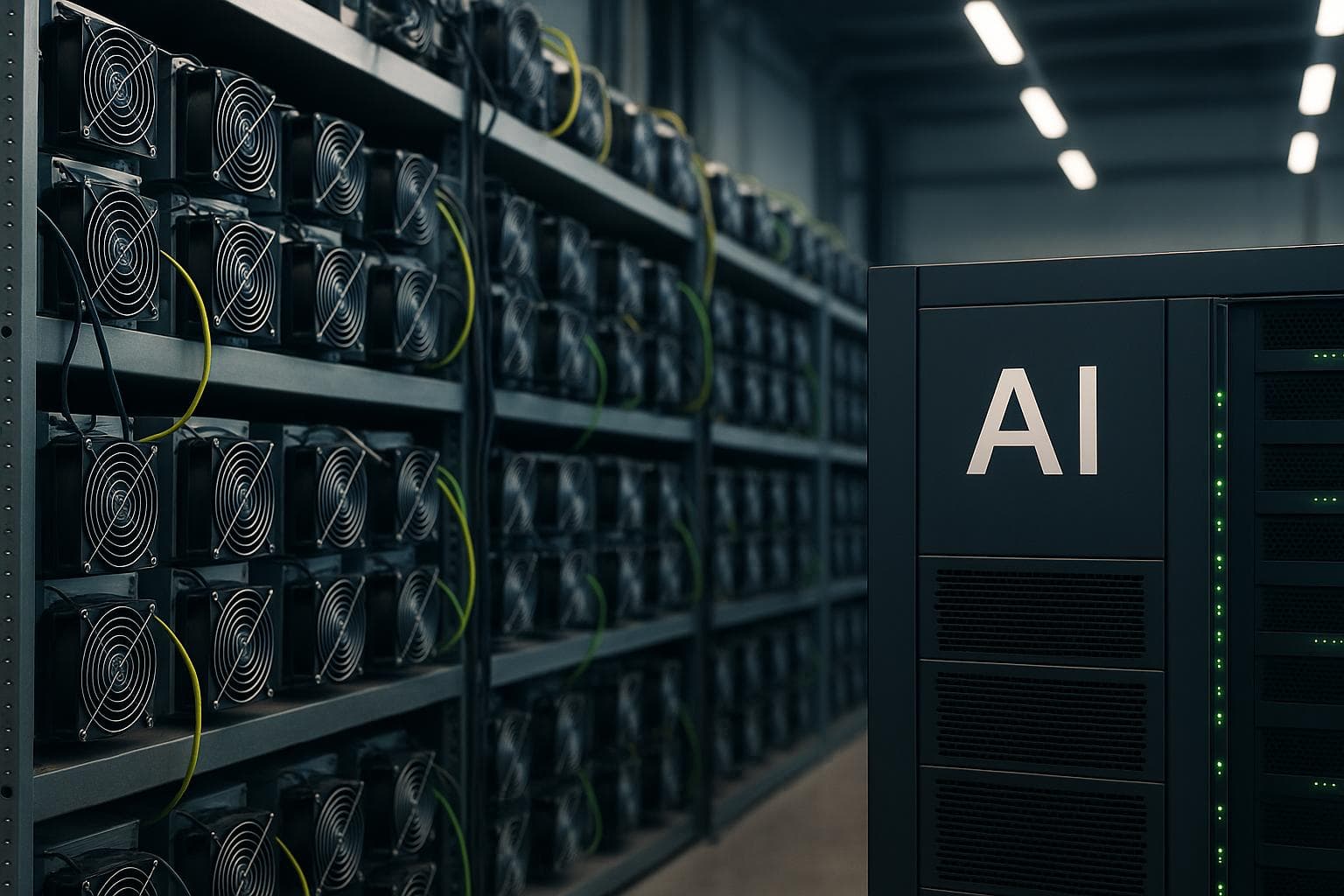How Crypto’s Hardest-Hit Sector Is Reinventing Itself for the AI Age
Once dismissed as energy-hungry relics of the last bull cycle, Bitcoin miners are suddenly finding themselves at the center of a new gold rush — this time, powered by artificial intelligence.
As global demand for AI compute capacity explodes, the same miners that once battled for Bitcoin block rewards are now being courted by AI companies, data-center investors, and cloud infrastructure giants. Their secret weapon? The one commodity both industries desperately need: cheap, scalable power.
From Mining Bitcoin to Training Models
The shift began quietly in early 2024. Publicly listed mining companies like CleanSpark, Bitfarms, and TeraWulf started experimenting with repurposing parts of their mining operations for AI and high-performance computing (HPC) workloads.
Now, it’s becoming a defining narrative.
According to analysts at Cantor Fitzgerald, nearly 20% of U.S. Bitcoin mining capacity could be redirected to AI inference and model training over the next 12 months — effectively transforming miners into hybrid compute providers.
“These firms already own large-scale energy contracts, optimized cooling systems, and industrial-grade hardware,” said an energy-market analyst in Austin. “That’s the hardest part of AI infrastructure. They’re just swapping algorithms — from SHA-256 to GPT.”
Why Miners Have an Edge
AI workloads require enormous energy throughput and stable power — two things Bitcoin miners mastered out of necessity.
Unlike traditional data centers, miners built operations around low-cost, interruptible power sources — often tapping stranded natural gas or renewable grids.
Now, those same contracts are being revalued as AI compute goldmines. With Nvidia and AMD GPUs in short supply, miners with liquid capital and access to energy can pivot faster than hyperscalers burdened by bureaucracy.
Key advantages include:
- Existing infrastructure: Hundreds of megawatts of secured power and cooling capacity already operational.
- Regulatory familiarity: Many miners already comply with energy, zoning, and public reporting standards.
- Geographical footprint: Proximity to cheap energy hubs like Texas, Iceland, and Alberta.
For investors, that combination turns miners from speculative crypto plays into early-stage AI infrastructure bets.
The Market Is Taking Notice
Mining stocks that integrated AI capacity early have outperformed pure miners this quarter.
- Iris Energy (IREN) jumped over 40% since August after announcing it would dedicate 20 MW to AI data hosting.
- Bitfarms confirmed similar diversification, leading to a valuation bump even as Bitcoin prices corrected.
- CleanSpark — one of the few miners with renewable-heavy operations — is now positioning itself as a “compute utility,” courting AI tenants.
“The market loves the narrative,” said a New York-based crypto equities analyst. “Miners were dying for a reason to rerate higher — AI gives them that catalyst.”
The Economics Behind the Pivot
Traditional Bitcoin mining relies on volatile block rewards and halving cycles. AI compute, on the other hand, offers contract-based recurring revenue — a model that institutional investors understand.
Estimates suggest that AI compute rentals could yield 2–4x more predictable revenue per MW than mining at current Bitcoin prices. That’s prompting miners to allocate idle power toward AI clients during bear phases, then return to mining when crypto markets heat up.
This hybrid model — part miner, part cloud provider — may define the next generation of public mining firms.
The Risk Side: Bandwidth, Hardware, and Timing
Still, this is no easy transformation. AI workloads require high-bandwidth networking, GPU clusters, and skilled operations staff — none of which traditional mining setups have in abundance.
A misstep could leave miners stuck with expensive retrofits and underutilized assets.
And with Bitcoin’s next halving due in 2026, hash-rate economics could tighten further, forcing miners to split focus between two capital-intensive industries.
“You can’t run AI on ASICs,” one CTO quipped. “It’s like turning a toaster into a laptop.”
But that hasn’t stopped the experimentation. Miners are now partnering with GPU hosting firms and AI cloud startups, offering power capacity in exchange for revenue share — a pragmatic way to test viability without full conversion.
What This Means for Crypto Investors
For investors, this pivot could redefine miner valuations. Instead of being valued purely on Bitcoin price correlation, hybrid miners might trade closer to data center or cloud computing multiples — historically much higher.
That shift could unlock fresh institutional inflows and de-risk the sector for long-term portfolios.
Yet, it also blurs the line between crypto-native infrastructure and traditional tech — a line that, once crossed, may dilute the very decentralization Bitcoin mining was built on.
The Bottom Line
Bitcoin miners spent years fighting accusations of waste and obsolescence.
Now, as AI’s hunger for power grows, those same data halls are becoming the unlikely backbone of the next digital revolution.
If they execute right, miners could transform from crypto survivors into AI-era powerhouses — proving that, once again, the future of innovation belongs to whoever controls the energy.


Comments